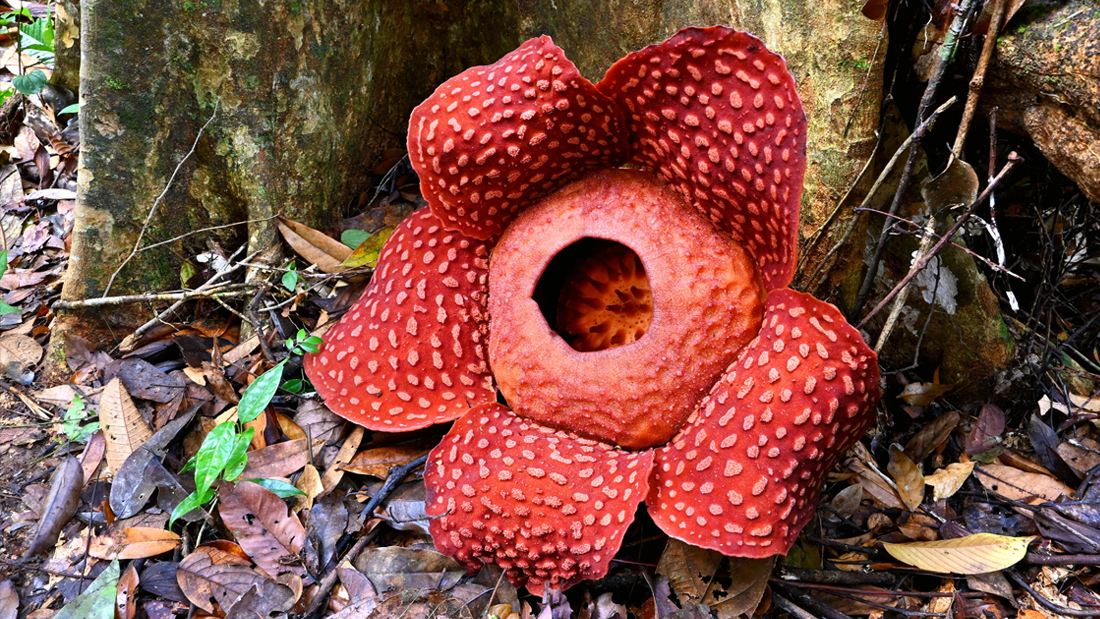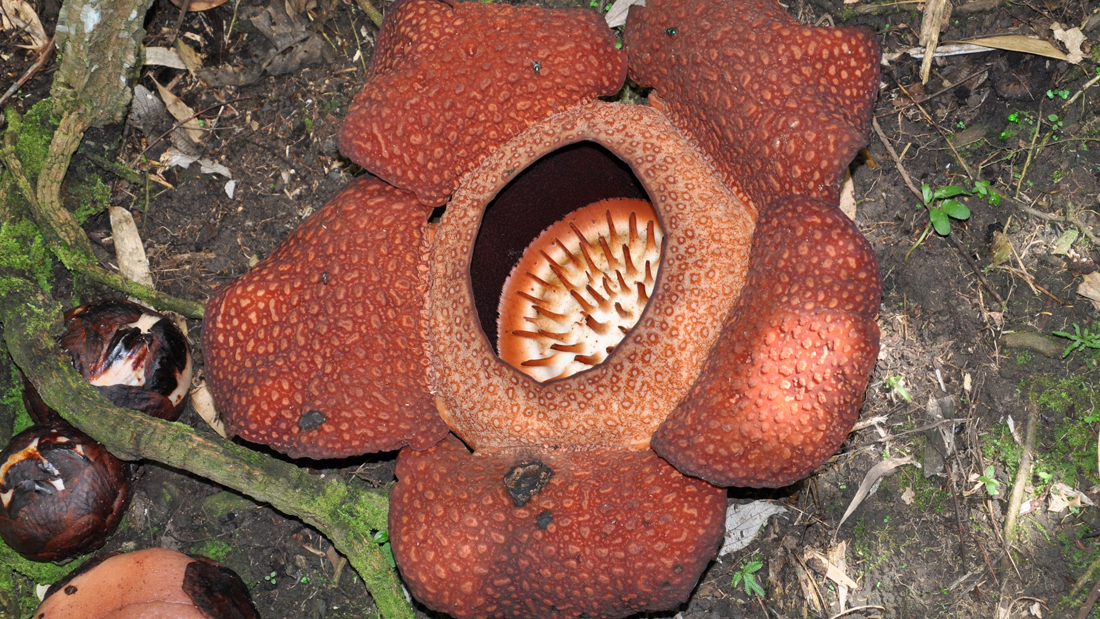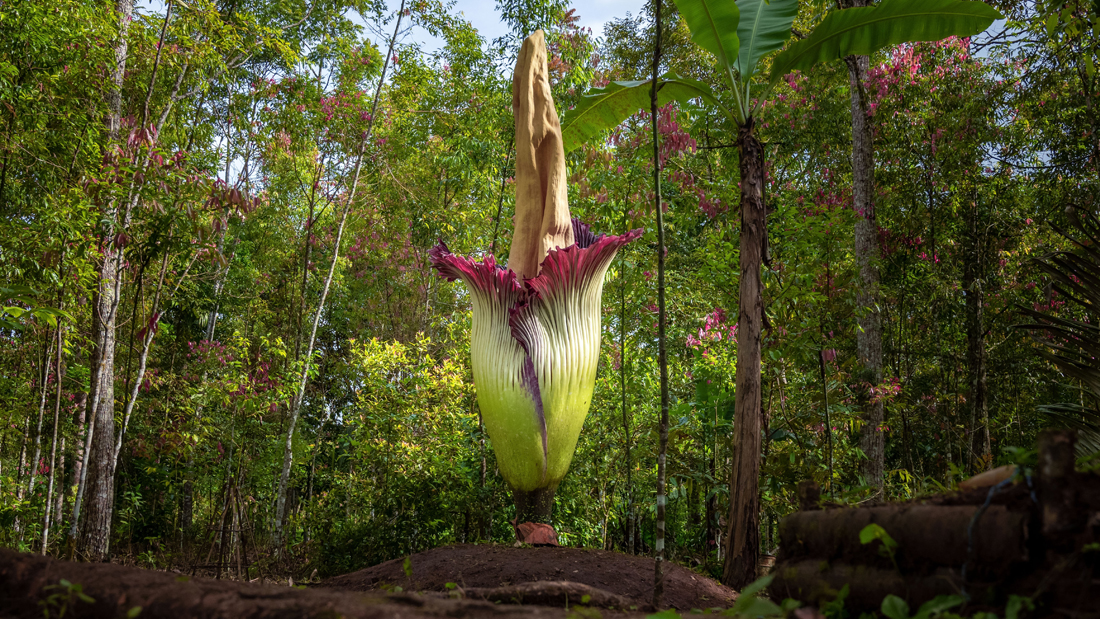Plants are among Earth’s oldest and largest organisms. The 80,000-year-old Pando – a vast colony of quaking aspen covering 42.6 hectares (105.3 acres) – is believed to be one of the oldest and largest living organisms. Meanwhile, the ocean harbors two of the largest single-celled organisms in the form of algae. While the world’s tallest tree, towering at 115.92 meters (380.3 feet), has its location kept secret from the public, the world’s largest flowers are far less discreet – much to the dismay of unsuspecting noses.
ADVERTISEMENT GO AD FREE
Rafflesia arnoldii, commonly known as the corpse flower or corpse lily, blooms into the largest individual flower in the world. While beautiful when in full bloom, this peculiar-looking flower emits a pungent aroma that smells like rotting flesh. It uses its stench to attract meat-loving insects like flies and beetles, which pollinate the flower and help it spread.

The uncensored version.
Image credit: Norman Ong / Shutterstock.com
Belonging to the family Rafflesiaceae, the plants in this family are parasitic and grow upon the roots or stems of other plants. With no leaves, stems, or roots, the corpse flower grows on vines throughout the rainforests of Borneo, Indonesia, and Sumatra.
Despite blooming into a 1 meter (3 foot) wide flower that weighs around 9 kilograms (20 pounds), the corpse flower spends much of its life barely visible as it uses its host vine for all its nutrients. Its buds, known as knops, first emerge as brown balls that resemble cabbages, these “cabbages” slowly unfurl to reveal a large, red flower covered in white spots.

A bloomed Rafflesia arnoldii flower alongside more knops.
Several species in the Rafflesia genus face the threat of extinction as a result of ecotourism and harvesting for their suspected but unsubstantiated medicinal benefits. However, despite cultivation efforts being vital for the species, their specific environmental requirements and mysterious biology have meant that even established botanical gardens like Kew Gardens, UK, have struggled to cultivate the species.
The first instance of successful cultivation of the flower was achieved by Sofi Mursidawati, a botanist at Bogor Botanical Gardens on the island of Java. “I don’t think there was anybody who was willing to work with Rafflesia because of the difficulties,” Mursidawati told National Geographic. “Everybody also told me that it was impossible.”
But after years of trial and error, Mursidawati successfully bloomed a male flower from a Tetrastigma vine graft in 2010, and subsequently, many more flowers have bloomed, making Bogor Botanical Gardens one of the few places with a successfully cultivated Rafflesia arnoldii display.
ADVERTISEMENT GO AD FREE
However, Rafflesia arnoldii isn’t alone in being an enormous flower that absolutely reeks. Another one of the world’s largest flower species is also called the corpse flower, or Amorphophallus titanum. Despite not being related, both flowers give off the same rotten stench to attract pollinating insects. Amorphophallus titanum grows larger than Rafflesia arnoldii, reaching heights of up to 2.7 meters (9 feet), however, it is technically a cluster of many flowers so can’t claim the “biggest single flower” title.

Amorphophallus titanum is enormous, but is not one singular flower.
Image credit: Bpk Maizal / Shutterstock.com
Hey nature, how about bringing us some giant flowers that don’t smell like death next? Just a thought.
Source Link: What Is The World’s Biggest Flower?